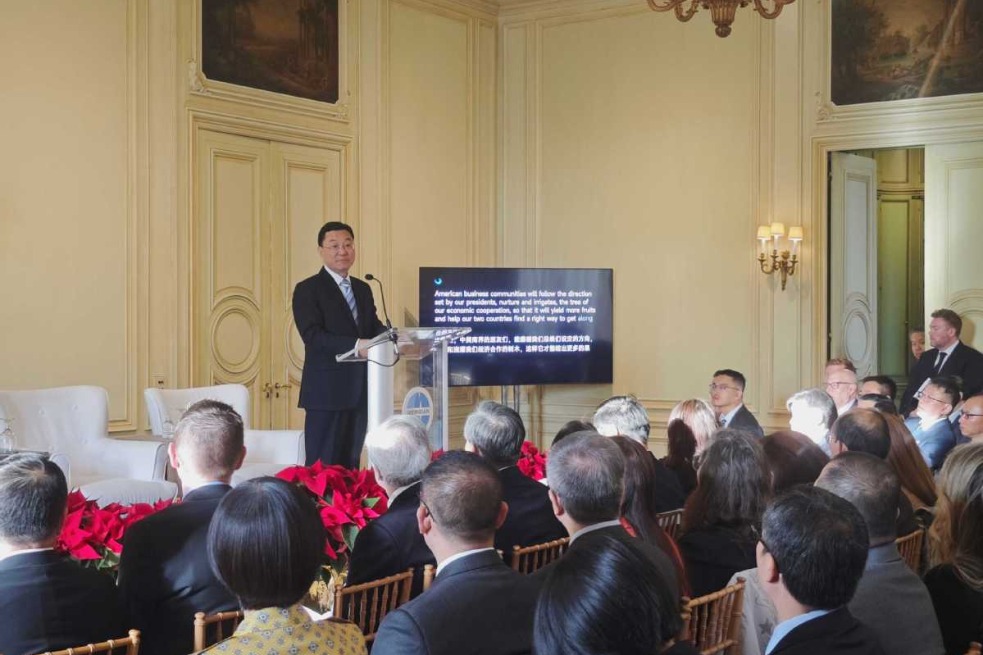Plea for end to trade conflict grows louder


Pain of tariffs imposed on Chinese goods felt in US, business forum hears
The call from US businesses seeking an end to the trade conflict with China is growing louder.
"Tariffs aren't paid by the Chinese government (or) by Chinese exporters," Anna Ashton, vice-president of government affairs at the US China Business Council, said in an online panel hosted by the China Corner Office last month.
"They're paid by US importers, and also … passed on to US consumers. So, this really hasn't had the effect of hurting Chinese businesses, or the Chinese government. It has hurt our own industry."
US business and consumers have absorbed the tariffs' impact, Ashton said.
On Nov 12 the business council and other associations wrote to US Treasury Secretary Janet Yellen and US Trade Representative Katherine Tai highlighting the damage the trade conflict is having on US businesses, workers and consumers.
The groups urged the US to continue working with China to ensure full implementation of the phase one trade agreement, reduce Section 301 tariffs and broaden the tariff-exclusion process.
"The Section 301 and retaliatory tariffs put in place over the last several years continue to disproportionately cause economic harm to US businesses, farmers, workers and families," the letter said.
"We agree with secretary Yellen's recent comments that tariffs tend to increase domestic prices and raise costs to consumers and businesses due to higher cost inputs and that lowering US and Chinese tariffs could help ease inflation."
According to a Congressional Budget Office estimate, the tariffs would have cost the average US household nearly $1,300 in 2020.
US importers have paid more than $110 billion in Section 301 China tariffs since their inception, about $40 billion of which has been assessed during the administration of US President Joe Biden.
These costs, compounded by other inflationary pressures, impose a significant burden on US businesses, farmers and families trying to recover from the effects of the pandemic, tariff opponents argue.
Top challenge
"The top challenge that our companies report and have reported the last four years running business in China is the political dynamic between the United States and China," Ashton said.
Jeffrey Heller, founding partner of the San Francisco firm Heller Manus Architects, said the company had been "extremely busy up to the point of the last administration, when the politics started getting colder, nationally, and internationally".
"And being from California and being on a group called the Bay Area Council, we've always been very pro trade and relations with China," Heller said in the online meeting. "One of our core beliefs is that the people-to-people relationship is extremely important."
Heller started working in China in 2004.
Greater Pacific Industries, based in Bellevue, Washington state, and with offices in Philadelphia, San Diego and Shanghai, has imported products from Asia for 26 years.
Ben Zhang, founder and chief executive, said that due to the political atmosphere, he had to change part of the company's name from "China" to "Pacific" last year and expand the supply chain base beyond China.
"Most of these products are manufactured in China. Because of the tariff imposed on the Chinese goods the last several years, we've been forced to take some of those projects out of China to Southeast Asian countries such as Vietnam, Cambodia and Philippines.
"But those countries still are heavily dependent on China for the raw materials list."
According to a report released by the US China Business Council on Nov 1, US goods exports to China rose almost 18 percent in 2020. The Chinese market was alone among the US' major export markets to register growth that year. The finding was contained in the 2021 Congressional Districts' Goods and Services Exports to China report.
One major reason is the phase one trade deal, which was finalized in January last year with China granting many exclusions for US goods exported to China in 2020.
The US exported just under $105 billion in goods to China in 2019, and last year, after China instituted tariff exclusions following the phase one trade deal, that figure rose to $123 billion, the second-highest amount in a decade.































